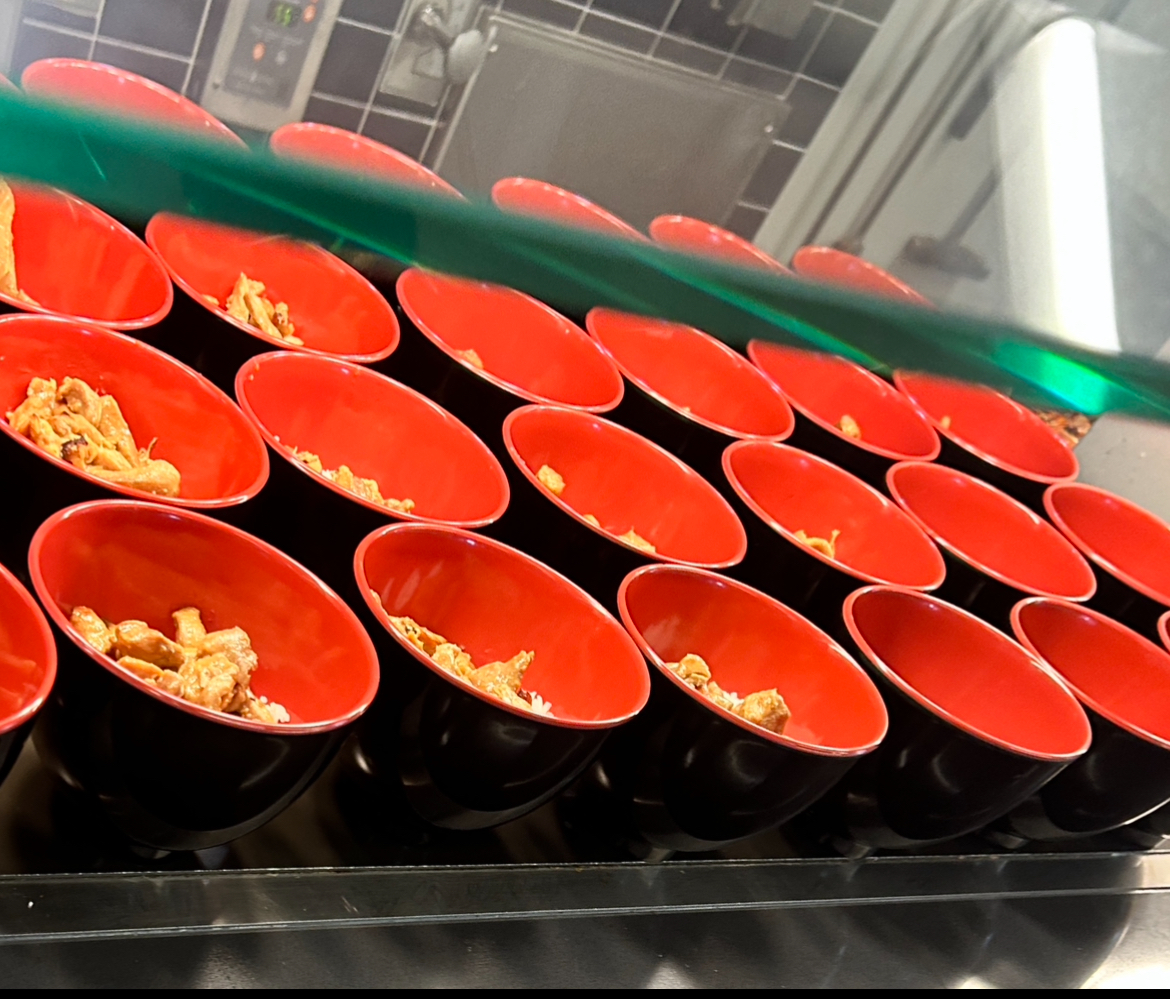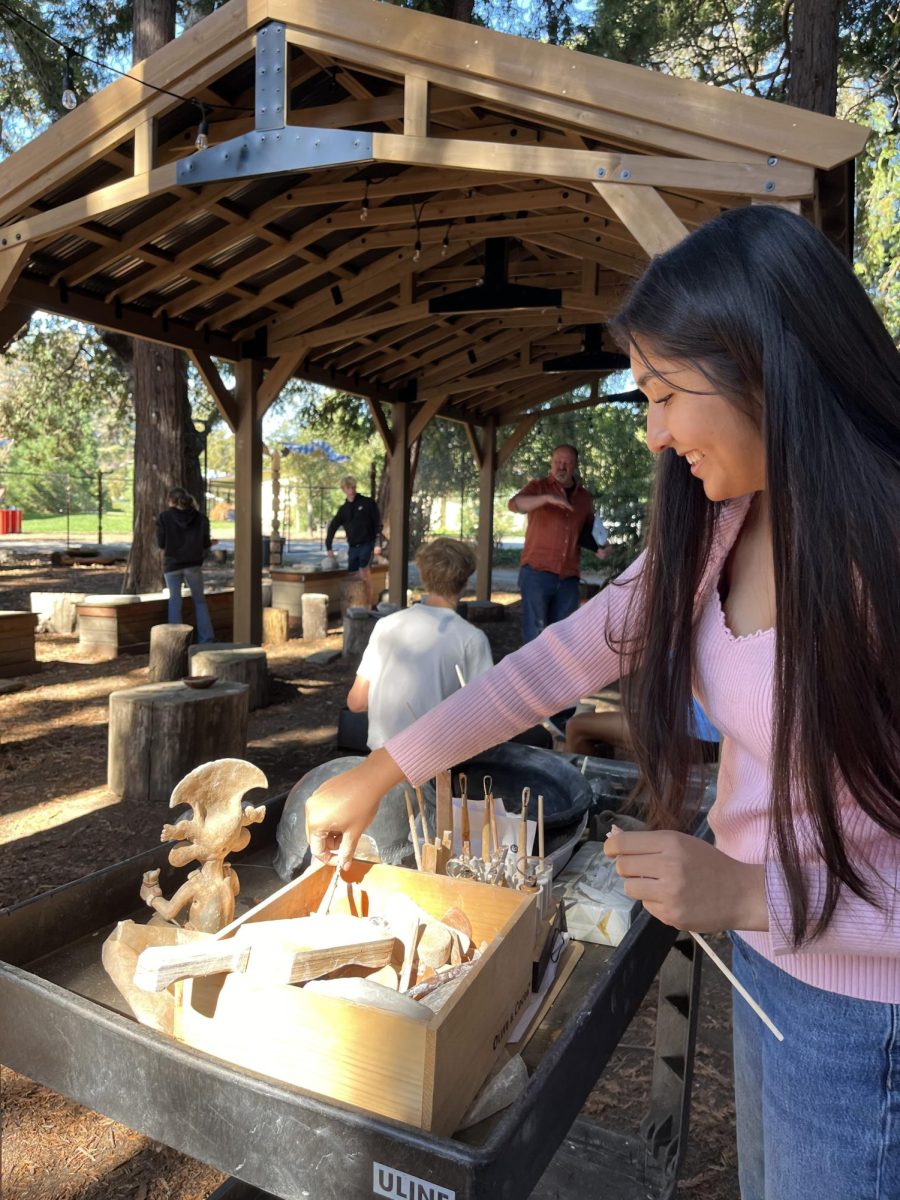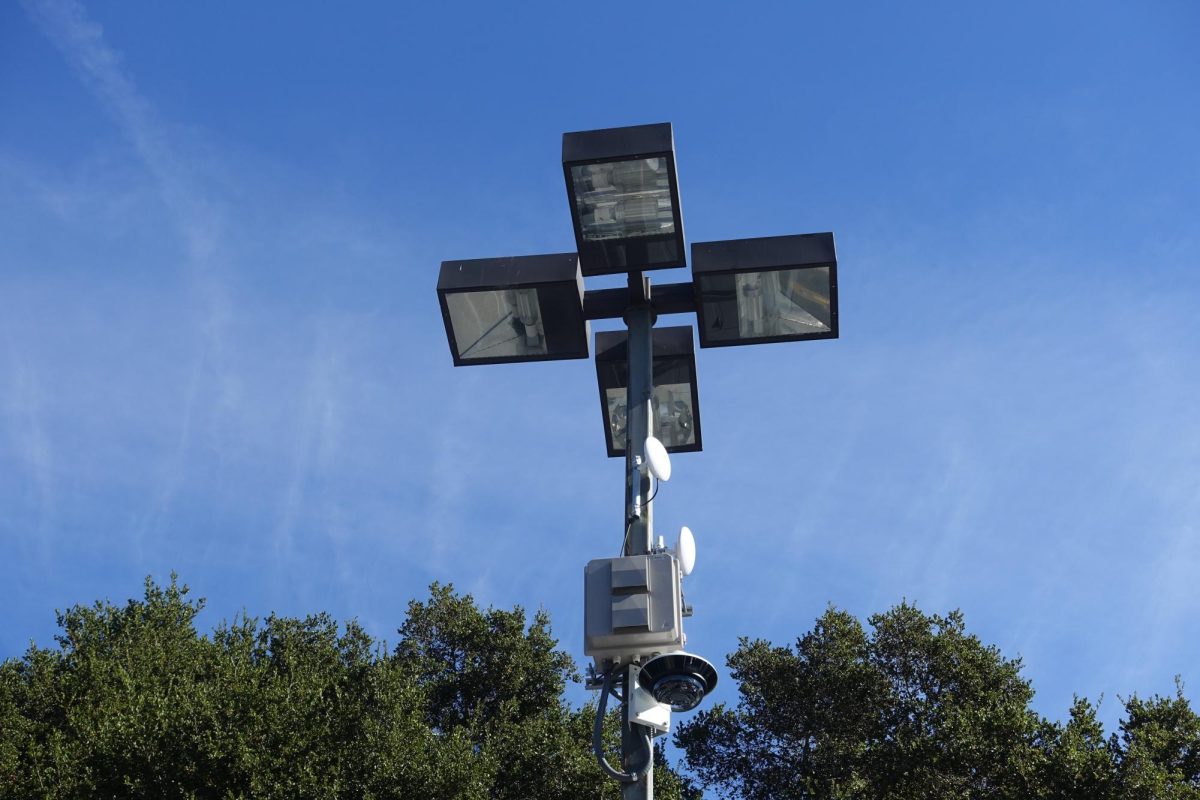Four Menlo alums prepare to describe their experiences taking a gap year in front of students at Martin Hall. Staff photo: Samantha Stevens.
By Samantha Stevens
On Jan. 9th, a panel of four Menlo alums who took a gap year discussed the pros and cons of taking a year-long break from traditional academics before starting their freshman year of college. The students on the panel included Rory Plewman ‘16, Samantha Frenkel-Popell ‘16, Ellie Lieberman ‘17, and Aaron Lee ‘17.
A widely agreed upon positive of participating in a gap year was the experience of being outside of the “Menlo bubble”; they spoke about meeting people from all over the world and learning about vastly different perspectives from their own. The two most dominant downsides were the pre-planning required and the “FOMO” (Fear Of Missing Out) that comes along with hearing about or seeing through social media other high school friends’ experiences in college.
Plewman, who is now a freshman at University of California-Berkeley, noted that his process to apply for a gap year grant from the university was challenging, as it only accepts 10% of proposals by students already admitted. But Plewman knew from a young age that he wanted to participate in a gap year, so he devised a detailed plan and continued to contact the admissions office to express how significant a gap year would be to him. His advice to students thinking about planning a gap year would be to gather knowledge about your prospective colleges’ gap year policies, and most importantly, create a solid plan to display how seriously you plan to take the time off from school.
Frenkel-Popell, who is now a freshman at Harvard University, had two internships: one at the Magical Bridge Foundation in Palo Alto, which advocates for inclusive play for all kids, and another with The Centrist Project, which is an organization that encourages independent candidates to run for public office.
Frenkel-Popell also traveled to Europe, the east coast, Oklahoma, and worked as a nanny for a month. She reassured the audience that you don’t need to go far to be impacted by a gap year experience. For instance, in Oklahoma, where she interviewed World War II veterans, she also spoke to multiple conservative Trump supporters, people she had never interacted with in the Bay Area. With this experience, she was able to go into college with a widened lens that she wouldn’t have had beforehand.
Frenkel-Popell wishes for students to recognize there are parts of the U.S. that are vastly different from the Bay Area, such as the deep south or the east coast, and thus should be considered for gap year exploration. Students don’t have to leave the country on an expensive trip in order to gain perspective.
While Frenkel-Popell mostly stayed within the country, Lieberman and Lee traveled to East Africa with a semester program called Adventures Cross Country (ARCC). Although both alums acknowledged feelings of isolation due to comparing themselves to most who were going straight into college after high school, they ended up appreciating learning about a culture different from their own. “In the end it was the right decision because college will always be there,” Lieberman said.
Lee recommends that students who have an interest in a gap year participate in the Menlo Abroad travel program to get a sampling of what a gap year may entail. Lastly, Lieberman recommends taking classes or joining clubs that interest you at Menlo to give you an idea of what you want to do in for a gap year or your future at large.








